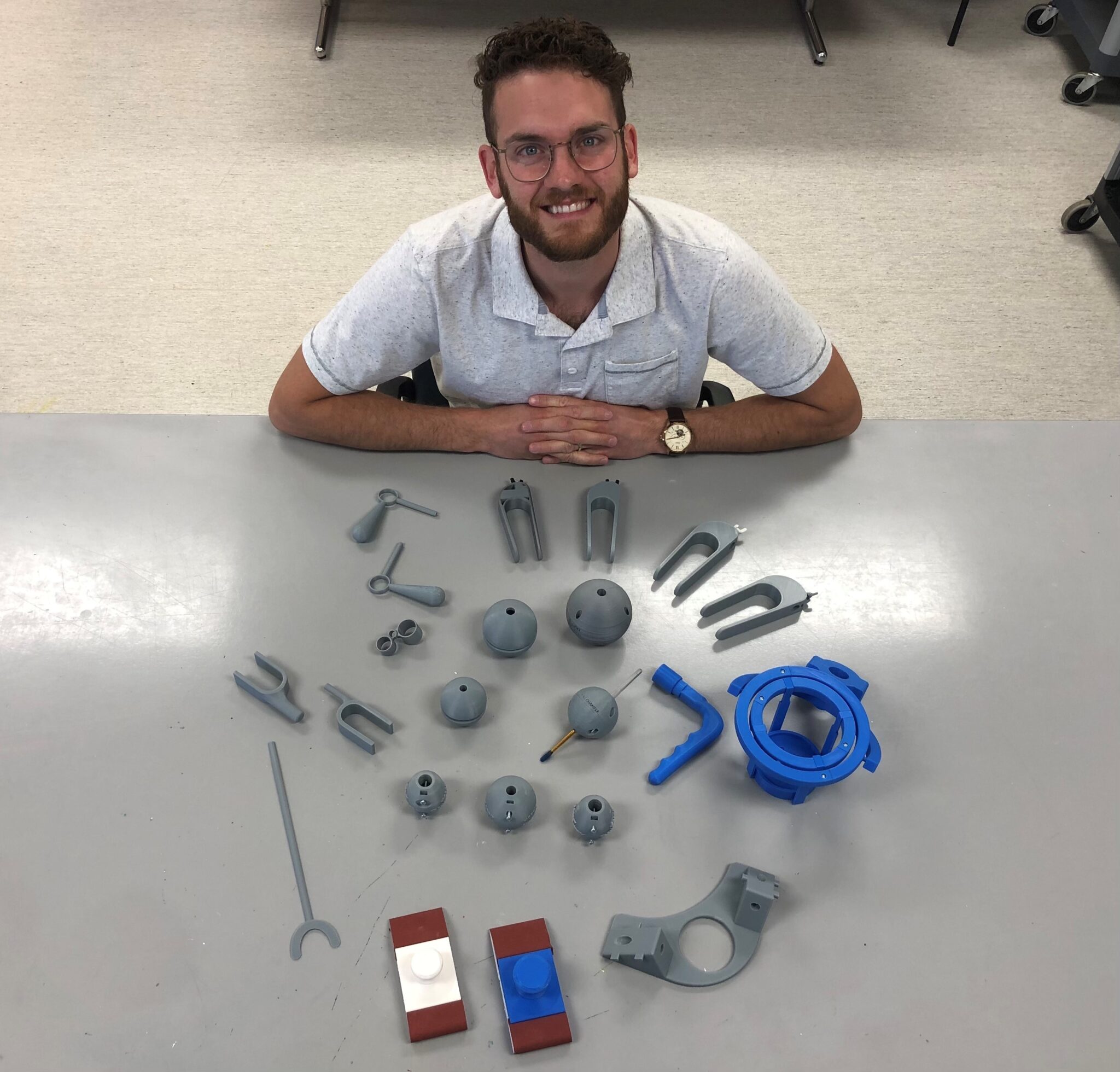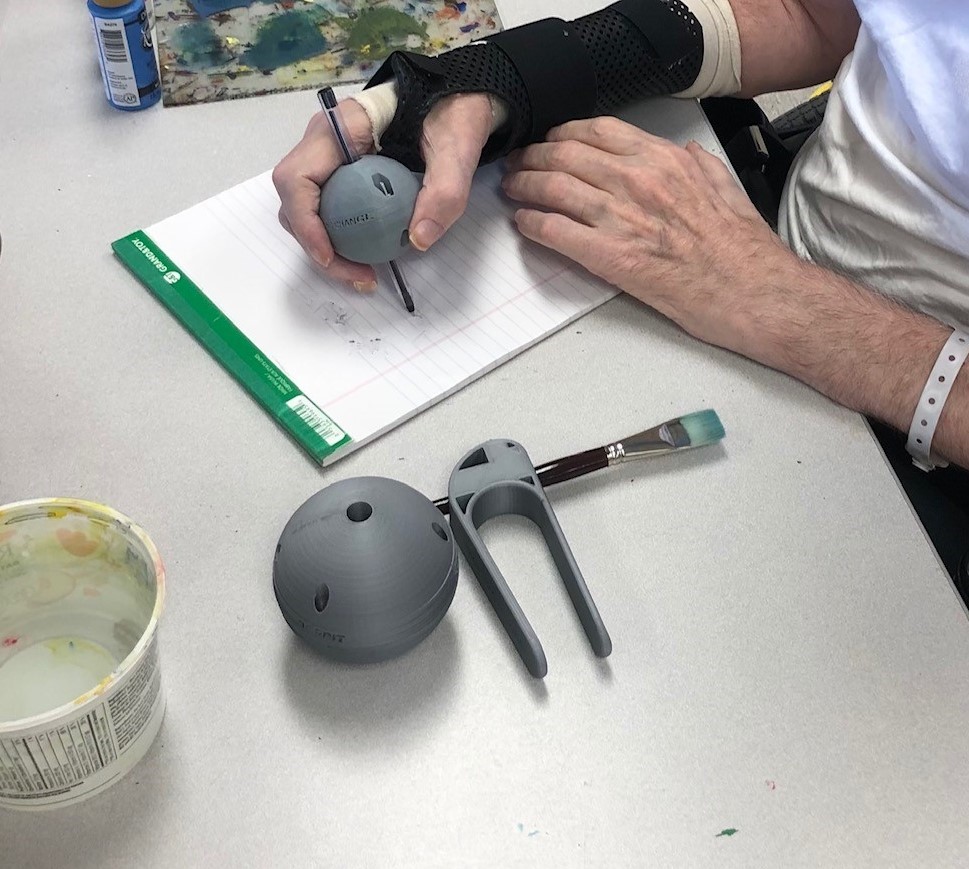
Over last summer, University of Alberta students Lucas Plamondon and Olivia Tronchin worked together during their work experience at Glenrose Rehabilitation Hospital (new window) to print assistive devices to help patients.
“In recreational therapy, our goal is to get patients back to doing the things they love, kind of alongside the rehab, get them out into the community, get them participating in different leisure options, and while they’re here, we want to make sure we’re giving them different activities they can try for the first time,” says Lucas, a recreational therapy student.
“The [3D printed] tools have really helped us do that, and the ones that we’ve used the most honestly are the Makers Making Change designs.”
Having initially found the Makers Making Change designs along with others on Thingiverse, Lucas started working with Olivia, who was doing an engineering co-op at GRRIT (new window), to 3D print various devices.

A couple of the designs they found really helpful from Makers Making Change were the pen ball and the palm pen holder, printing a number of them for patients. Thanks to the open-source nature of the designs, they were able to make a few adjustments to the designs, like printing the pen ball as one piece instead of two, and using 3D printed wingnuts on the designs rather than screws to hold the pen or writing utensil in place, making it easier to adjust for the patient. They also re-sized the designs, depending on the clients’ needs.
“[The devices have] been very, very helpful for our patients, some of the things we’ve heard as far as reports and reviews are it decreases discomfort while they’re painting or if they’re writing, the tools also reduce fatigue is a big one that we hear, increases control for writing or painting, and then it also decreases pain,” Lucas explains.
“Something I’ve also seen is if they’re functionally more capable with a tool, it actually increases their motivation as well to participate, that’s a huge win for us, but moreso it’s a huge win for the patient and their rehab journey.”

Both Lucas and Olivia are amazed at the potential of open-source assistive design.
“I mean it’s life changing for some people, like Lucas had shown me the signature of one gentleman before free handing with a pen, and then using one of the devices, and it was like night and day,” Olivia shares. “If you don’t need these devices, you just take the fact that you can write your name for granted.”
“And really, I’ve noticed the only limit is your imagination when it comes to this stuff,” says Lucas.
This post originally appeared on the Makers Making Change (new window) website.
